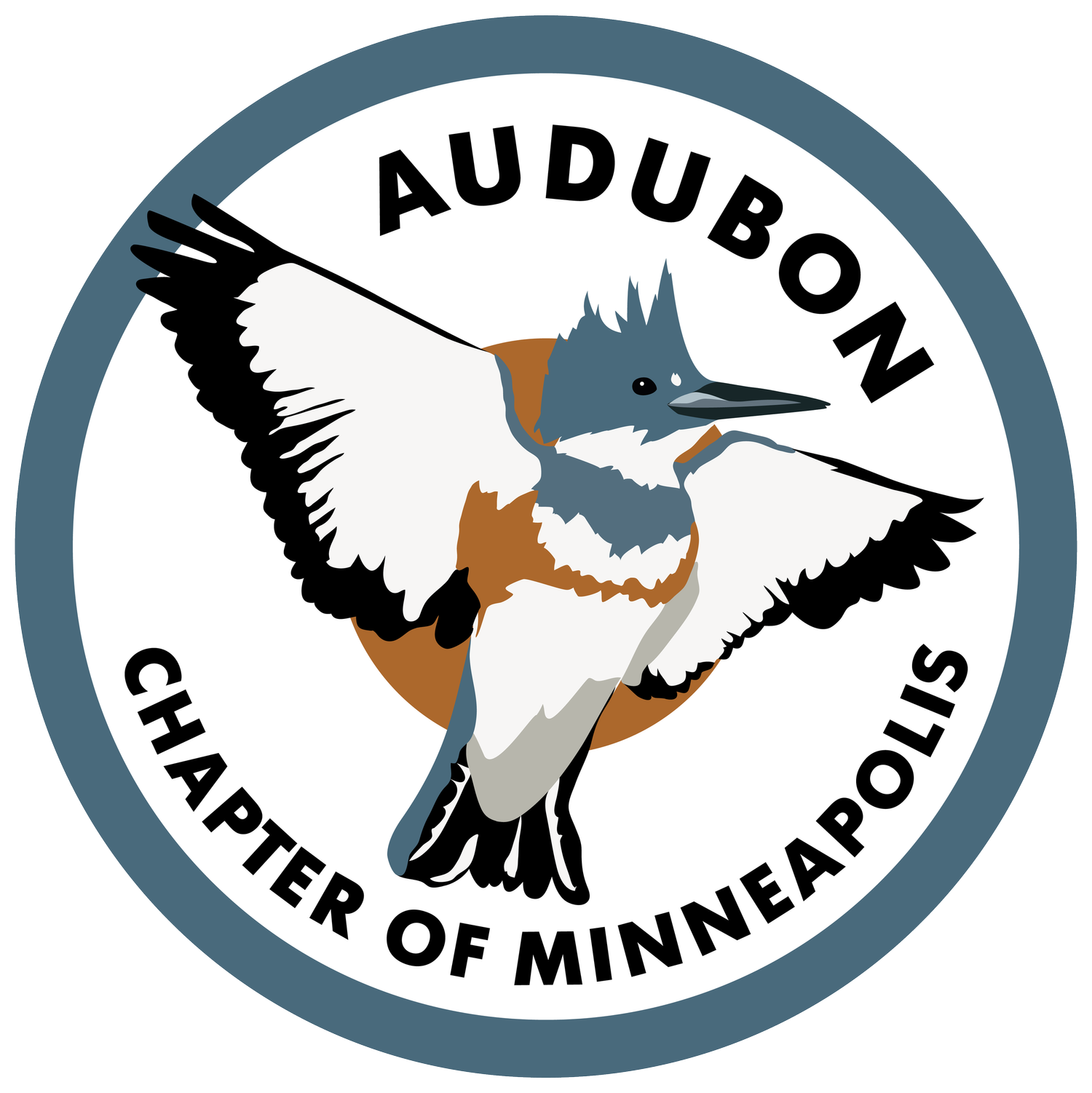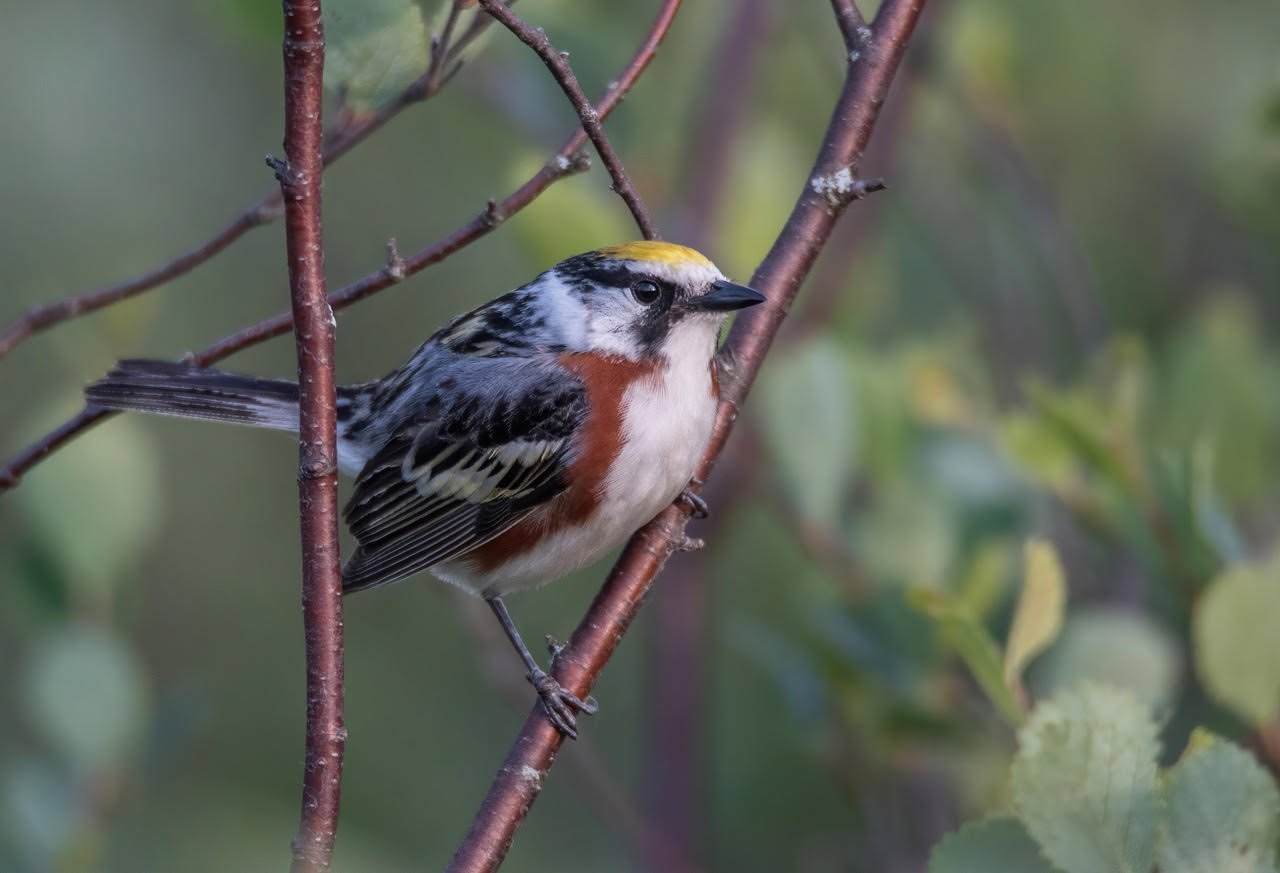In support of bird names for birds
The aptly named Chestnut-sided Warbler Photo: Keith Olstad
Audubon Chapter of Minneapolis supports replacing all common eponymous and honorific English bird names as listed by the American Ornithological Society (AOS) with descriptive names: bird names for birds.
The Bird Names for Birds initiative, co-founded by Jordan E. Rutter and Gabriel Foley, calls for the removal of all official eponymous and honorific common bird names. This effort emerged out of a renewed societal emphasis on social justice and a recognition that all organizations should evaluate their societal biases, including scientific and birding organizations.
Our recent statement in support of this reads as follows:
Audubon Chapter of Minneapolis supports replacing all eponymous common bird names with descriptive names. This process should include groups and peoples historically not represented or underrepresented on naming committees. We believe that eponymous names provide no intrinsic value to the study and enjoyment of birds and that a different naming system is overdue. Promoting the exclusive use of descriptive names reflects our modern values and our commitment to promoting equity, diversity and inclusion in the birding community. We also call on National Audubon Society to formally support this effort. We support the goals of Bird Names for Birds.
Looking Back at Bird Names
English language field guides list two names for birds [1]: a common name (MacGillivray’s Warbler) and a scientific name (Geothlypis tolmiei). The Bird Names for Birds initiative calls for the removal of 150 honorific common names: cases where a bird is named after a person who “discovered” it, (Gambel’s Quail) or in honor of a person (Virginia’s Warbler). Going forward, we’ll use the term honorific for both honorific and eponymous common bird names.
Honorific bird naming conventions were established by colonizers during a historical time of genocide against indigenous people and slavery, when laws, customs, and social norms favored white men. Honorific names capture and valorize that time in history.
Take Bachman’s Sparrow, named for John Bachman. In his biography on the Bird Names for Birds website we learn about his legacy: “A slave-owner himself, he saw no issue with holding fellow humans in bondage, even as he acknowledged their humanity.” You can read the troubling aspect of his biography (and those of others) on the Bird Names for Birds website. These biographies document accounts of genocide, grave descration, slavery, white supremacy and more.
We can also challenge the idea of discovery. Did these white men truly discover these birds [2]? Most were certainly recognized by native peoples who had names for them in their own languages.
Who did the naming matters. All honorific names were given by white men on behalf of other white men. So these names also represent a time when women as well as all black, indigenous and people of color (BIPOC) were barred from most scientific learning, careers and pursuits. This legacy continues into modern times with modern naming panels, like the American Ornithological Society, staffed primarily by white males.
What’s in a Name?
Common bird names certainly are not held sacrosanct even within scientific naming panels. As an example, Iceterus galbula, commonly called the Baltimore Oriole, was changed to the Northern Oriole, and then back to the Baltimore Oriole. A 2014 field guide calls Perisoreus canadensis a Gray Jay, but those published today will call it a Canada Jay. Every year, birds are taxonomically split into two species or lumped into one species, and their common names change too.
Are these honorific names meaningful today? Without looking, try to recall any fact about MacGillivray, Townsend, Bicknell or Abert. Most people know little to nothing about these men.
What about Lucy, Anna, Virginia? Most birds named for women use just their first name because these honorifics do not honor something they did, just that they were someone’s daughter, wife or relative. The names are simply sentimental.
So, possibly, honorific names don’t truly honor an individual in the sense of helping people remember their activities.
Blue Jay. Oak Titmouse. White-breasted Nuthatch. These descriptive names however immediately call to mind something unique to these birds. They reflect, even honor, their behaviors, habitats or appearances.
As a new birder just learning to ID birds in the field, what is easier to remember and associate with the bird in your binoculars: Audubon’s Warbler or Yellow-rumped warbler? Which is easier to keep straight in your developing birding brain: a Red-breasted Nuthatch and a White-breasted Nuthatch or a Lucy’s Warbler and a Virginia’s Warbler?
Is There Honor in that Honorific?
When thinking about honorific names, we must ask ourselves if these historical figures are people we even want to honor. Who were they other than people who studied, depicted and/or categorized birds? If no one remembers the man Bachman, who really cares if there is a Bachman’s Sparrow?
John James Audubon dug up corpses of fallen soldiers, decapitated them and shipped the heads to a friend who was using the pseudo-science of phrenology to prove that whites were the superior race.
Some might argue they were “men of their time.” Before we use this argument, we must remember there were plenty of men and women who argued vociferously against slavery and for equality of all people regardless of skin color or anatomy.
Should we honor one element of a person and whitewash the rest? Would we want a Pol Pot Plover? A Stalin’s Stork? A Hitler’s Hummingbird?
In an excellent essay in Audubon Magazine, What Do We Do About John James Audubon, J. Drew Lanham, conservation ornithologist and endowed faculty at Clemson University, reflects on the hurtful and racist legacy of people like Audubon and what it can mean for BIPOC birders. His point: it does matter. It matters who these men were and it matters that we continue to attach their names to birds today.
Imagine beginning your study of birds and looking into Townsend (Townsend’s Warbler and Townsend’s Solitaire). You’d find a man who knowingly desecrated native burial sites, stole skulls and shipped them to a white man attempting to prove white supremacy.
It is insulting to continue to honor oppressors. Removing honorifics removes a bit of that legacy and helps us create a naming system reflective of our current values and sensibilities. It certainly will not end racism, but it does send a message: the birding community has a will and a desire to correct mistakes of the past and move forward with a better, more inclusive system.
Change is in the Air
After an April 2021 Community Congress on English Bird Names hosted by AOS, AOS announced they’d form an ad hoc committee to address the issue of “harmful English bird names [3].”
The Bird Names for Birds initiative gives a very important suggestion as AOS undertakes its work: “The voices of Black, Indigenous, and People of Color as well as other underrepresented community members on this issue should be listened to and supported as frequently as possible. While we want to prevent the work from falling onto these community members, it is critical to reaching our second goal (an EDI [equity, diversity, inclusion] based process) that their thoughts and opinions be listened to without reservation [4].”
While not all honorific names are for people with difficult pasts, removing all honorifics will result in a more sensible and inclusive naming system that can only benefit the study and enjoyment of birds.
Certainly the task ahead will not be easy. Female birds look different from males but most common naming conventions use the often more varied male plumage as a reference. There are some pelagic species (like Shearwaters and Storm-Petrels) that will give naming committees a run for their money.
Let us borrow a phrase from the Hippocratic Oath: in birding, and in bird naming, we should strive to do no harm. And when it comes to bird naming, the best way to do this is with Bird Names for Birds.
[1] We acknowledge that birds can have numerous common names: Common Loon is called the Great Northern Diver in Europe, Maang in Ojibwe, Colimbo Grande by some Spanish speakers.
[2] Some people have debated whether John James Audubon was mixed race. Regardless, he certainly passed for white and has been historically placed firmly in the “white” category.
[3] Read AOS’s June 2021 announcement.
[4] Read AOS’s current naming guidelines
Amy Simso Dean and Lisa Hakanson

